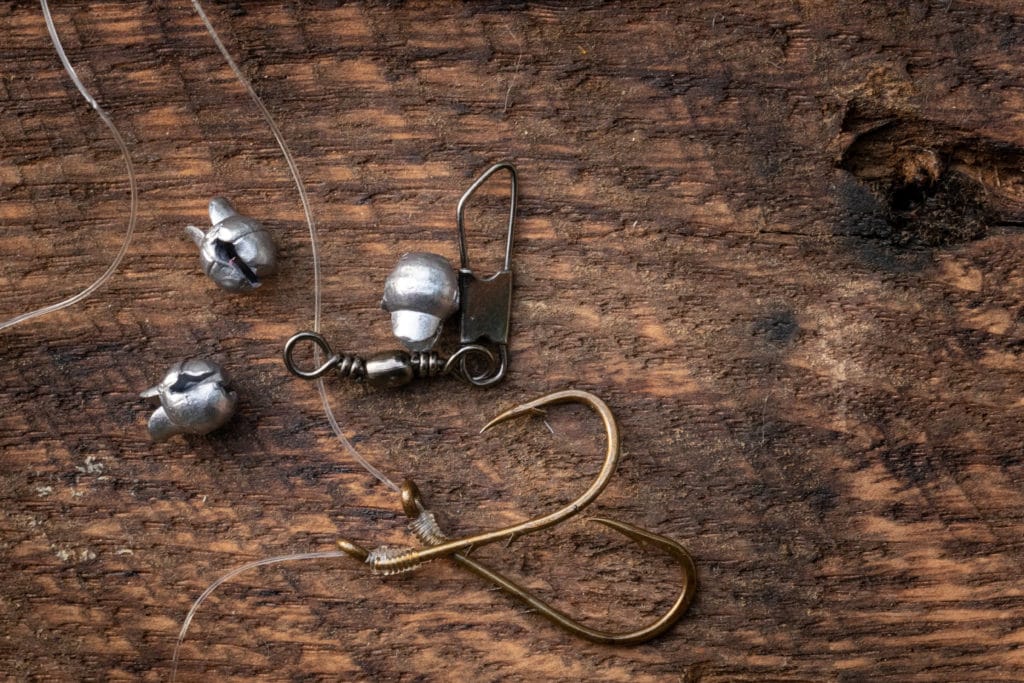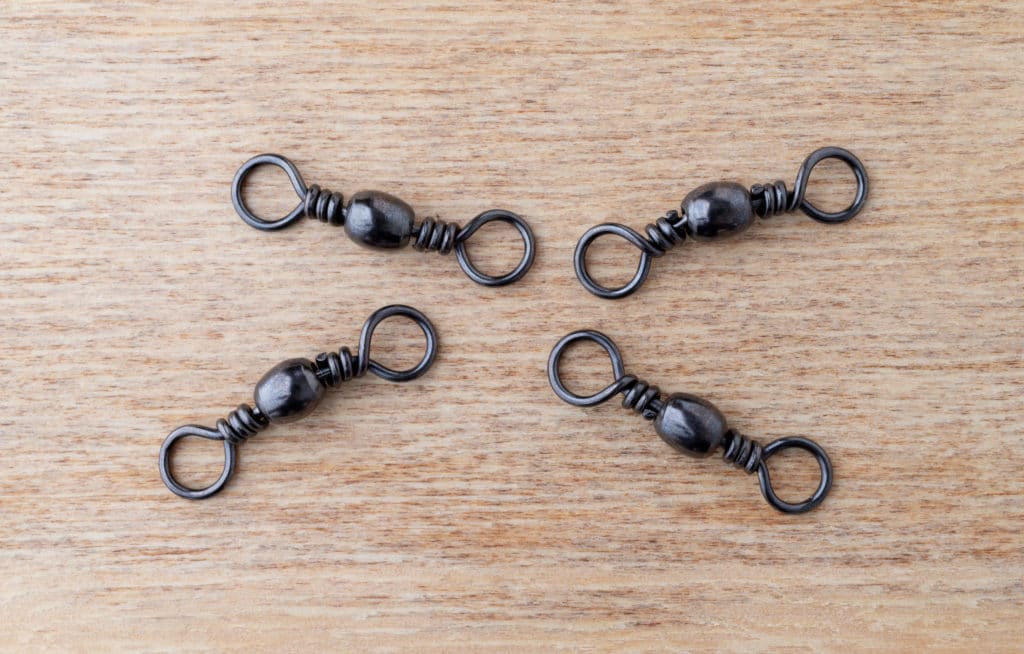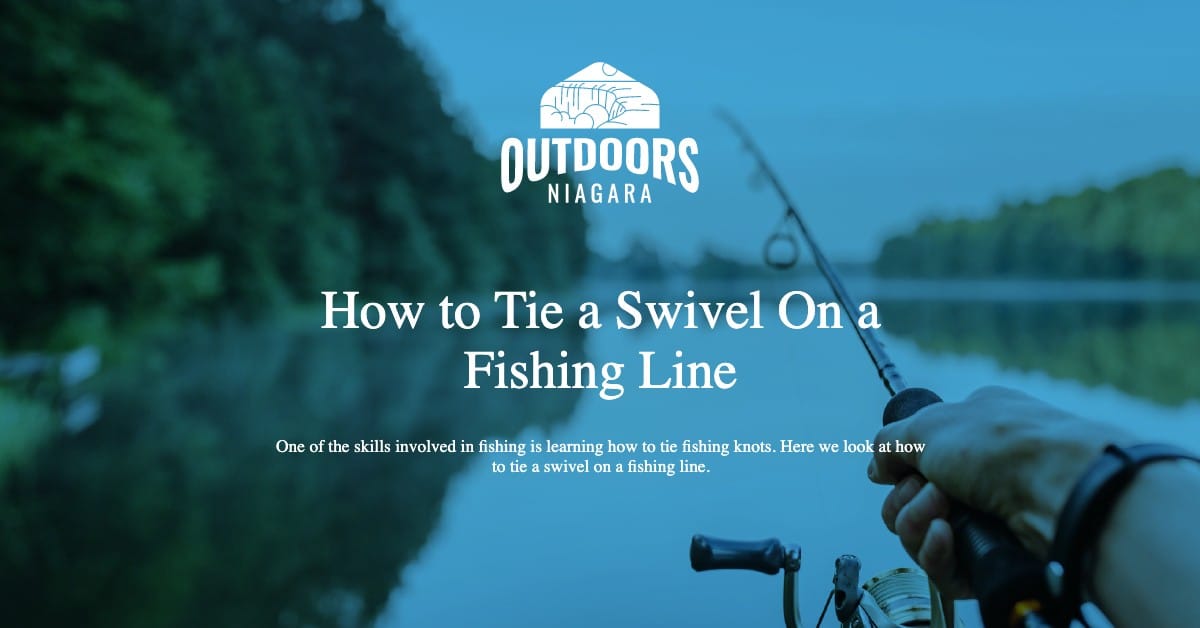Fishing is a great sport and needs the right skills to make it fun and successful.
One of those skills involves learning how to tie fishing knots.
And not just learning but doing it correctly and understanding the use of different types of knots.
It is common to find a swivel popping out at the end of your line, and it can puzzle you on to tie it.
So if you are a beginner or maybe fishing is your hobby, read on. You will learn a few critical tips to help you learn the various types of knots and how you tie them.

Contents
Does your Swivel Pop Out At the End of the Fishing Line?
Tying a swivel is an easy technique, but beginners often don’t get it right. An inappropriately done line may affect your catch. In addition, there’s a huge probability of the knot loosening up and affecting your fishing success. So don’t assume that tying a good knot is not important, but you should at least learn how to tie a simple knot.
There are various fishing knots such as Palomar knot, uni knot, surgeon’s knot, improved clinch knot, and Trilene knot. Let’s take a look at some of these fishing knots.

What Are The Different Knots For Lures?
Below are some of the best knots for lures that you need to learn how to create for an enjoyable and successful fishing trip.
Improved Clinch Knot
Most experienced anglers love the clinch knot and consider it the ideal knot for fishing.
The knot holds your line to a clip, swivel, or lure and preserves up to 95 % line strength.
The secret to making this famous fishing knot starts with five twists of the tag end all around the standing end and then sliding the tag clip back through the created loop.
Duncan Knot or Uni Knot?
Some folks believe that the uni knot is the finest knot for fishing and attaching an eyed-hook to a leader.
With this knot, you can trim the ends short, and all will be well.
Learning the skill of creating fishing knots is excellent and not in vain, as they perform well with monofilament or braided fishing lines.
You can also use a uni knot to connect lines of different diameters.
Non-Slip Loop Knots
A non-slip loop knot forms a locked loop that allows a hook to move freely.
It usually works on bigger lines when a tight knot, like the improved clinch, may obstruct a lure, bait, or hook movement.
To make non-slip loop knots, do the following:
- Make an overhand knot 5–10 inches from the line’s end.
- Thread the tag end thru the bait eye and back thru the overhand loop.
- Wrap the tag end five times around the standing line above the overhand.
- Then, once again, slide it through the overhand knot.
- Pull the lines firmly after moistening them using saliva.
Snelling An Eyed Hook
You tie the knot away from the hook’s eye when making this knot.
This type of knot fishing is useful for fishing since they boost strength and capture rates with larger fish.
- Begin with an eye hook turned up or down.
- Form a big loop along the hook’s shank, bypassing the line through the hook.
- The tag end should be positioned along the hook’s shank.
- Move the entire loop around in the hook’s shank and the tag end, creating turns around the shank towards the hook’s curve.
- You can make 6-10 wraps depending on the line and hook’s size.
- To tighten the snell, tug over the mainline.
The Blood Knot
The blood knot is quite common in the fishing industry and has been used for decades.
It’s a simple knot that anyone can do. However, you should make at least 5 to 7 turns on each side, increasing the knot’s strength.
Follow the below tips to tie this knot.
- Overlap the endpoints of the lines to link them. Then, twist/ rotate one around the other five times. Finally, return the tagged end in between two lines.
- Repeat with the opposite end, twisting similar turns in the opposite direction. Note that if you made 5 or 7 turns on one side, then you should repeat the same turns on the other side.
- Then gently pull the lines in opposing directions. The turns will be twisted and bundled. You may trim the ends that are closer to the knots.
Figure-Eight Knot
This is more recent than the blood knot.
You can do this in two ways: a simple figure-eight or a figure-eight loop knot.
Simple Figure-eight Knot
If you’re looking for a simple type of tying a fishing knot, this is your option.
It’s not as strong as other knots, so you need to double up the line.
However, you can follow these steps to make a figure-eight knot.
- Thread the line through the hook.
- Form a loop by wrapping the tag end around the straight line.
- Pull the tag end back over the first loop after passing it across the front of the straight line.
- Tighten the knot by moistening it. Note that your final knot should look like an ‘8’.
Figure-eight Loop Knot
The figure-eight loop is a handy twist used to establish an interconnected loop system for attaching rigs to the fishing line.
It’s best when you want to make a loop-to-loop connection at the tip of your fishing line and the top of a hook eye.
You do this by:
- Make a 6 – 8-inch long loop by doubling over your line.
- Bring your original loop below the standing lines to make a second loop.
- Wrap the first loop around the straight lines, then through the second loop.
- Fasten the knot by bringing both ends together and clipping the tag edge.
How to Tie a Swivel to a Fishing Line
A swivel knot is a strong knot that offshore anglers use to attach a hook/swivel to a line.
One of the unique attributes of this knot is that if any strand breaks, then the other one will likely retain.
This makes it a reliable knot loved by experienced anglers as it helps them continue fishing at ease.
Below are tips that you can use to make a tight knot.
- To begin, make an overhand knot just at the end of your line.
- Next, thread one end thru the loop of the swivel.
- Drag the same end up from beneath to meet its companion on top so that you have two strands pointed out and downwards towards each other.
- Then, gently press on both ends and extend outwards with one hand.
- This will bring the two ends close together until they connect before you tie them off at the loop. At this point, your offshore swivel knot is completely made and ready for your fishing expedition.
The Benefits of Tying a Swivel on a Fishing Linear
- Enhances the motion and presentation of the lure
- It helps to minimize fish from ingesting bait and escaping capture.
- Reduces the quantity of line lost while utilizing an outside reel.
- Swivels can also connect the fishing line to terminal tackle like hooks, lures, or sinkers.
- You can use the swivel’s bead and loop pieces as a fishing leader.
Conclusion
Like any other sport, fishing demands acquiring the right skills, such as learning how to tie knots.
On the other hand, the field of knots is wide, and you may find some complicated knots and other simpler ones.
The above article should help you understand and perfect the knot techniques as you plan your next fishing expedition.







